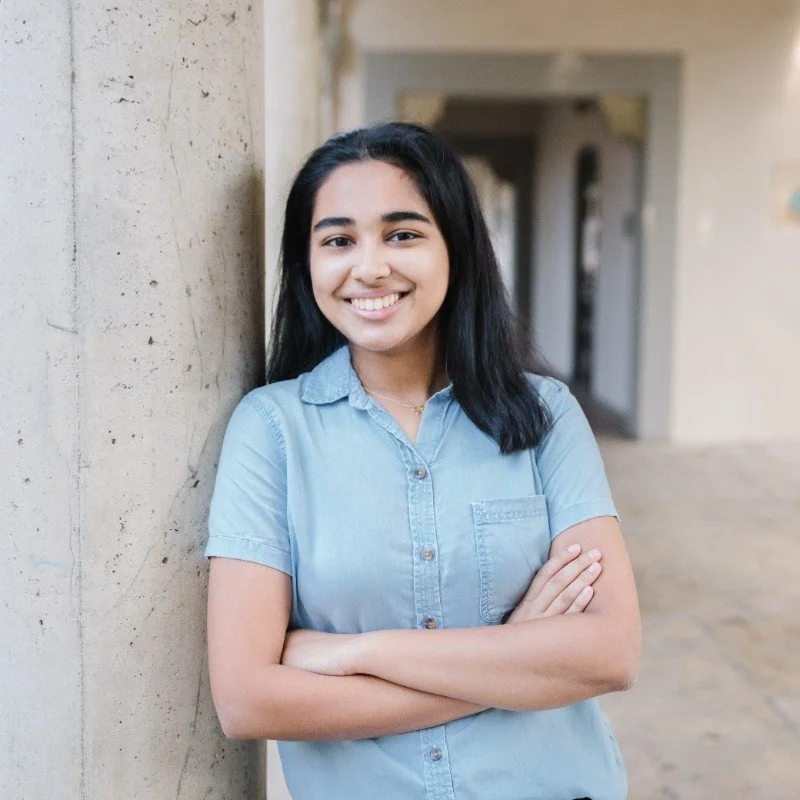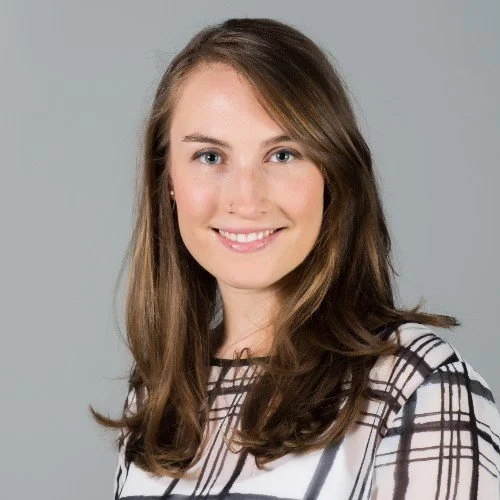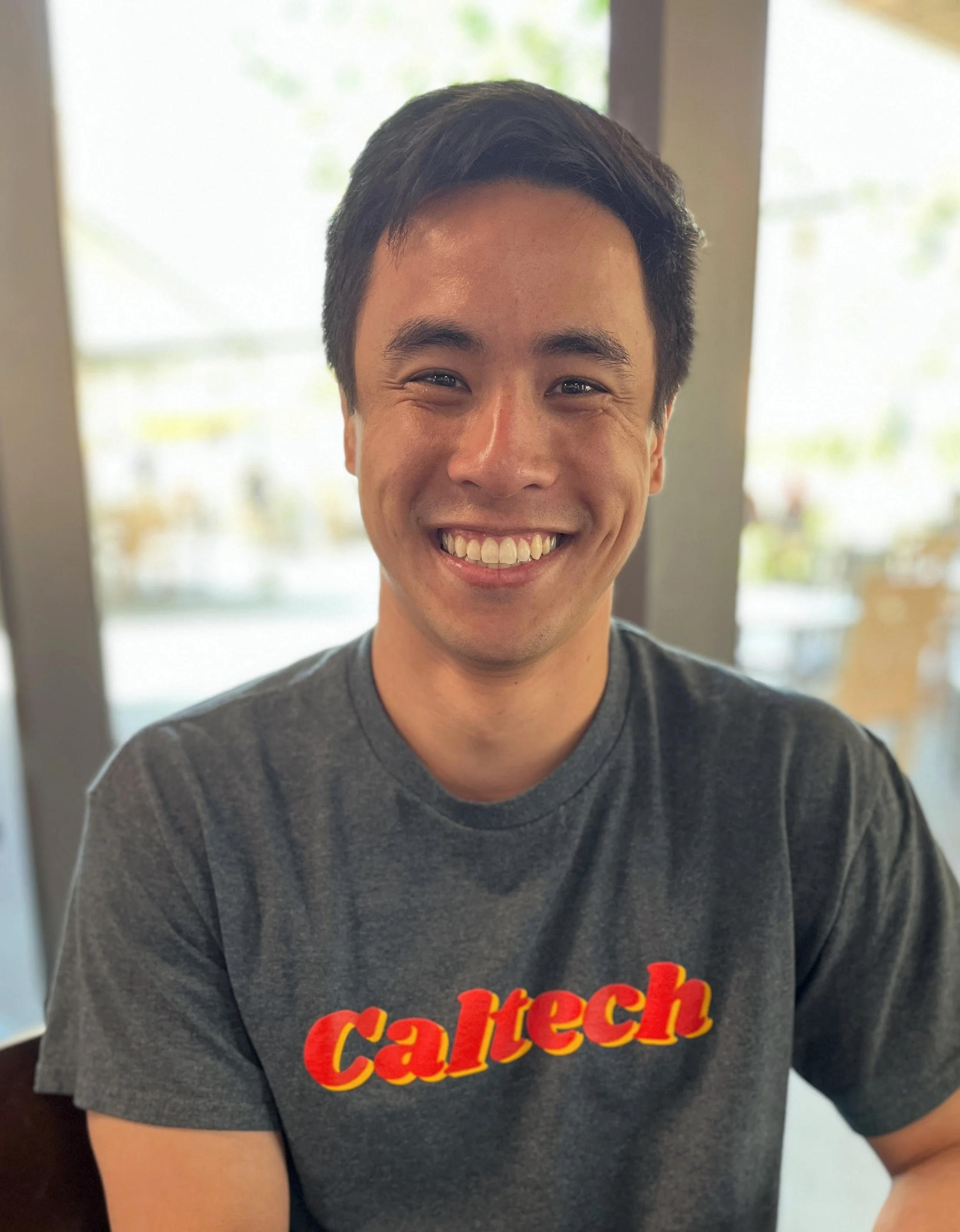#SoCaltech: Meet the Class of 2023
Some of the lessons learned, legacies left behind, and next horizons for five graduating students in Caltech’s class of 2023.
by JuliA Ehlert
Aelin Hunt, a graduating senior in materials science and chemistry, shares a wide array of their experiences at Caltech.
Jolly Patro. Courtesy Jolly Patro.
“I didn’t do Science Olympiad until high school. … I moved to a new high school, so it’s actually how I found my community of people. I really enjoyed it. It was something that made me excited to learn about science outside of the classroom. My favorite event was the chemistry lab, which makes sense, because now I’m a chemistry major.
“Science Olympiad is more like the research world in the sense that you’re given a very general topic and then you’re asked to find information. And you learn how to process information and, essentially, teach yourself. The event is all about sharing STEM, and that’s what Caltech’s mission is too. We always love getting to host the state tournament and share that together.
“So many members of our planning team really enjoyed competing in Science Olympiad when we were younger. Now we get this full-circle moment; this is what got so many of us into science, and now we get to give back and do the same thing for the next generation."
Jolly Patro, a graduating senior, was a member of the Science Olympiad Planning Team during her four years at Caltech. In her final two years, she served as co-president and led the coordination of the tournament, which drew thousands of middle and high school students to campus (and virtually) to engage with STEM.
Patro also served as Chemistry Club president, a Student-Faculty Programs ambassador, co-secretary of the Board of Control, undergraduate representative to the Board of Trustees Student Experience Committee, secretary of Blacker House, chemistry teaching assistant, and member of the Caltech Orchestra. She completed several research projects as part of the Summer Undergraduate Research Fellowship (SURF) program and is graduating with a degree in chemistry. She will pursue a doctorate at Northwestern University.
Rachael Kuintzle. Courtesy Rachael Kuintzle.
“I like to say that I'm a cellular linguist because I study the Notch signaling pathway, which is a language that cells use to communicate. I'm studying the syntax and the grammar of its molecular usage, like which molecules are used as signals in which contexts and why they're used instead of a different one. In that way, my research intersects with my love for writing and my love for words. My favorite thing is exploring what language can do, how language is designed, and how it can be harnessed to make change—cellularly, intellectually, and societally.
“Writing is everything for me. I like to write fiction that’s accessible to people who haven’t done a PhD in molecular biology, but I want all the speculative elements to be realistic and grounded in science as much as possible. I really enjoy stories where a trained scientist can suspend their disbelief and think, ‘Maybe this could really happen.’ I loved creating something like that with members of our community.”
Rachael Kuintzle, who completed her PhD in biochemistry and molecular biophysics in May, is walking during Commencement on June 16. She founded TechLit, Caltech’s creative writing club, in 2017 and served as its president for several years. Kuintzle also served as editor in chief of Caltech and JPL’s original speculative fiction anthology, Inner Space and Outer Thoughts, which was published in March 2023.
Kuintzle helped organize the Day of Student Action for Reproductive Justice in October 2022, which resulted in the formation of the Graduate Student Action Network. She led initiatives in disability justice and student labor organizing. Kuintzle also served as the Caltech Graduate Student Council Advocacy Committee co-chair from 2022–2023. She is now planning to transition her career toward full-time science fiction writing.
Miggy Chuapoco. Photo: Julia Ehlert
“Viral vectors, in their simplest form, are essentially gene delivery carriers that you can use to package genes to study the brain, to study disease, or cure disease in some cases. We use these viruses to shuttle genes across the blood-brain barrier from the bloodstream. So, this is a noninvasive way of accessing the brain.
“My main project has been focusing on enabling this research outside of just rodents and into nonhuman primates, which are extremely important animal models for understanding how human cognition, brain function, and disease work.
“I think a lot of my interests were informed by personal experiences with family members with neurological disease. My mom had a stroke, which caused permanent brain damage, and she was in a vegetative state for 19 years. I think growing up thinking about cognition and consciousness and stuff like that was a really big catalyst for me to think about how the brain works.”
Miggy Chuapoco is graduating in June with a PhD in bioengineering. His research in the lab of Viviana Gradinaru is focused on developing tools for neuroscience researchers and medical applications. Chuapoco was a trainee in the Biotechnology Leadership Program at Caltech and completed an internship at Capsida Biotherapeutics, a gene therapy development company, during the COVID-19 pandemic.
At Caltech, he was also co-president of the Biotech Club, graduate representative to the Board of Trustees student experience committee, and a graduate resident associate for several years. Chuapoco plans to work in biotechnology venture capital after graduating and aims to eventually start his own company.
Lily Dove. Photo: Lance Hayashida
“I became an oceanographer because I am in awe of the power and mystery hidden below the waves. Our climate system is made up of all the parts of the earth, from the trees, to the ocean, to the atmosphere, to all the rocks around us, and the ocean plays a central hub in that system.
“Maybe you, like me, are the kind of person who gets really inspired by nature—maybe it's the beach, your local garden, or a forest, or the clouds in the sky. If those are the kinds of things that capture your attention and you wonder, ‘How does that work? How do we even understand those things?’ you can be an oceanographer or an Earth scientist. Next time you are in that space and you are curious, I encourage you to think about ‘How do we measure those things? How do we use robots and other technology to go out and collect data about the earth around us so that we can best respect and protect our planet?’"
Lily Dove, who defended her PhD in physical oceanography in May and will graduate on June 16, recently presented a Science Journey Lecture “Exploring Our Blue Planet Using Underwater Robots.”
The Science Journeys program brings science outreach to local middle and high school students. Dove presented about her path to becoming a scientist and her research on the exchange of carbon dioxide between the atmosphere, surface ocean, and interior ocean. She has spent more than 100 days at sea deploying scientific instruments and collecting data. Dove is also a Resnick Scholar, an advocate for increasing access to oceanography for historically marginalized students, and has served as both a mentor to two WAVE Fellows and a teaching assistant at Caltech. After graduation, she will start at Brown University as a NOAA Climate and Global Change Postdoctoral Fellow.




